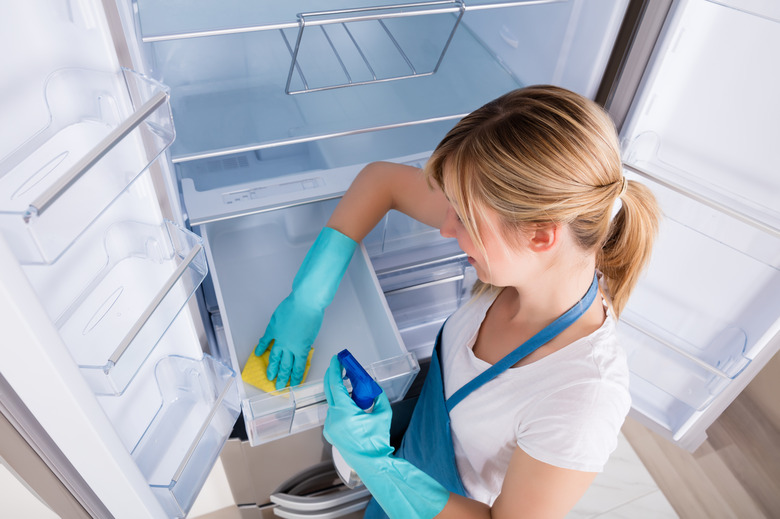How To Remove Rust From A Freezer
Metal rusts in high humidity, and it may surprise you to know that this includes stainless steel. It's rare for rust to eat a hole in a freezer, but it could happen if the rust is neglected for long enough. Most people never let things get to this point, and freezer rust repair usually means removing surface discoloration.
The best method for removing rust is to wipe it off with a cleaning agent. If the freezer is made of stainless steel, you have to be careful what type of cloth you use for wiping because rubbing stainless steel with an abrasive cloth or cleaning pad is probably what caused the rust in the first place, and it may make the problem worse. Commercial walk-in freezers also need special care, and if the floor is rusted, you may need to touch it up with an appropriate walk-in freezer floor paint.
Stainless Steel Freezer Rust Repair
Stainless Steel Freezer Rust Repair
Stainless steel has a surface coating of chromium oxide that makes it rust-resistant, but scratch that coating with an abrasive and you'll see why they don't categorize stainless steel as rustproof. The steel alloy under the chromium oxide layer can sometimes rust even more quickly than conventional steel.
To remove the rust, you need a soft, nonabrasive cloth and a good cleansing agent. Manufacturers such as Samsung and Bosch recommend using either Bar Keepers Friend or a mixture of 1 tablespoon or more of baking soda and 2 cups of water. Rub vigorously along the grain of the steel until the discoloration is gone.
Stainless steel can repair itself by developing a new protective layer of chromium oxide as long as you keep it clean and refrain from using abrasives or any product containing chlorine or chlorides, which are corrosive to this type of metal.
Removing Rust Stains From Enameled Steel
Removing Rust Stains From Enameled Steel
When rust develops inside a freezer cabinet, it's usually on stainless steel food racks or in the area around the door where condensation collects. If the outside of the freezer is enameled metal, rust may also be visible around the door, near the floor or in any area exposed to high humidity. If the rust amounts to little more than brown discoloration, you can usually wipe it off with an appropriate cleanser.
Bar Keepers Friend or a baking soda and water solution will usually do the trick, but for heavy discoloration, you may need to use vinegar or lemon juice. Both are acids that can dissolve rust, but they need time to work. Mix either one with borax to make a paste and let the paste sit on the rust for a few hours before wiping it off.
It's best to ignore the common advice to mix vinegar or lemon juice and baking soda to make a cleansing paste. Vinegar and lemon juice are acidic, and baking soda is alkaline, so they neutralize each other. Use baking soda first, and if it doesn't work, use vinegar or lemon juice, but don't mix them.
Dealing with Rust in a Walk-In Freezer
Dealing with Rust in a Walk-In Freezer
Rust may occur on the floor or panels of a walk-in freezer because people are constantly opening the door and allowing moisture into the space. You can prevent rust on the floor by installing rubber flooring or by painting the floor with epoxy paint for walk-in coolers. These are specialty products designed to pass health codes, so they may be a bit expensive.
If the floor or panels do get rusty, you may be able to remove the rust by rubbing it with any of the cleaning agents you use for conventional freezers, but if it's advanced, you may need to treat it with Naval Jelly or a similar rust dissolver. Once the rust is gone, apply a protective coating approved by your local health authority.
